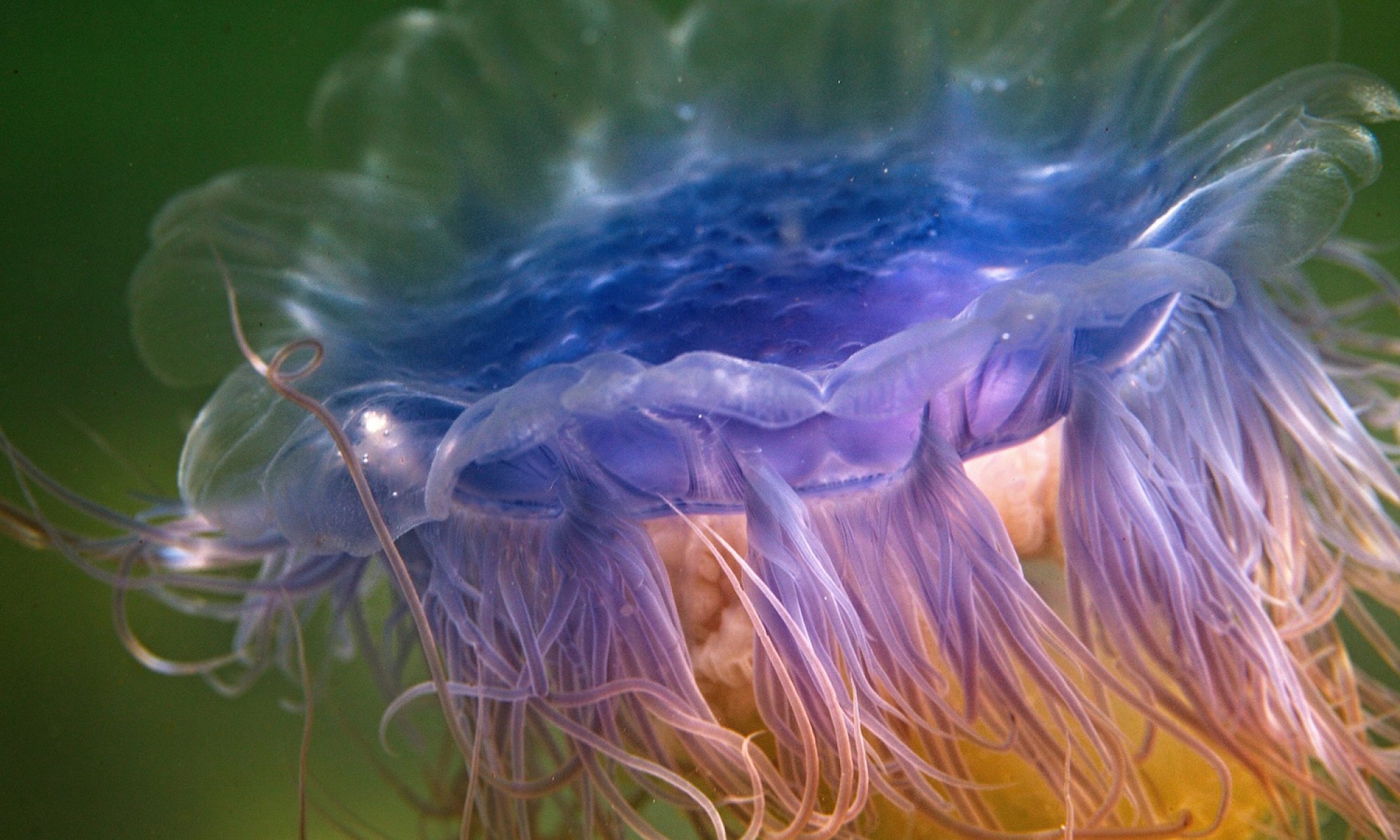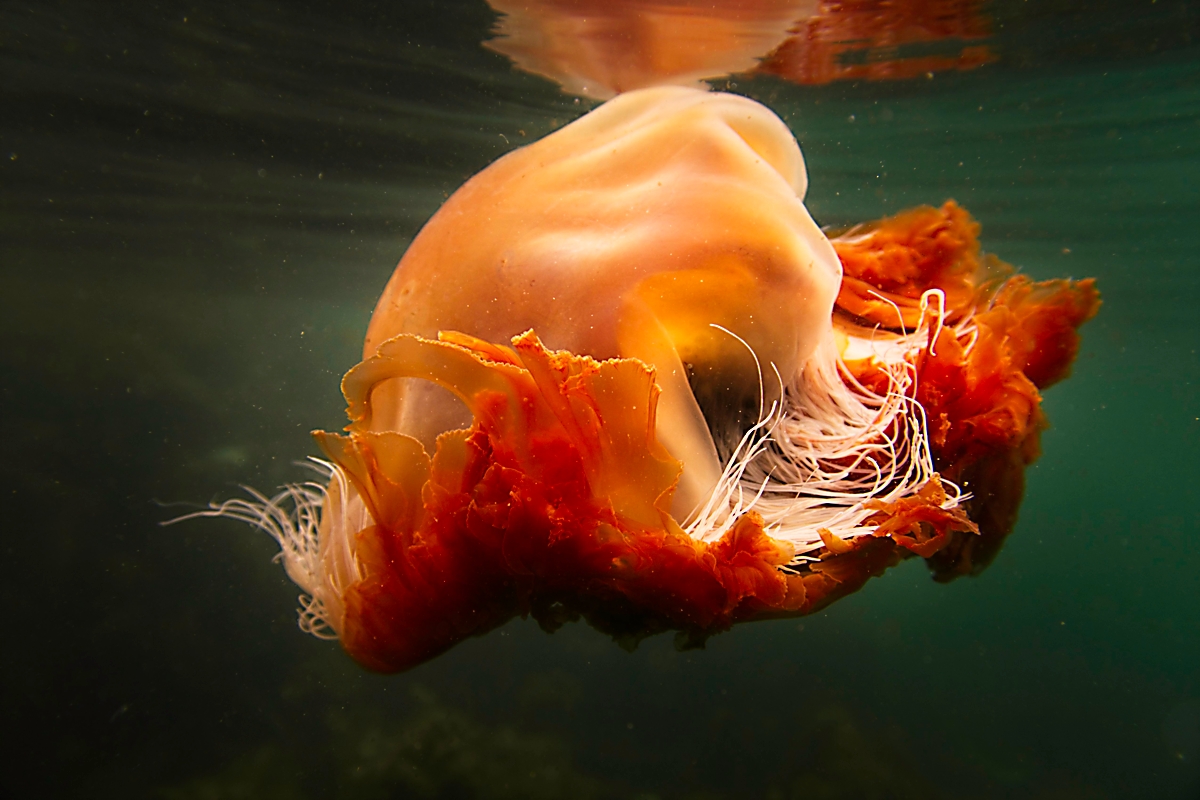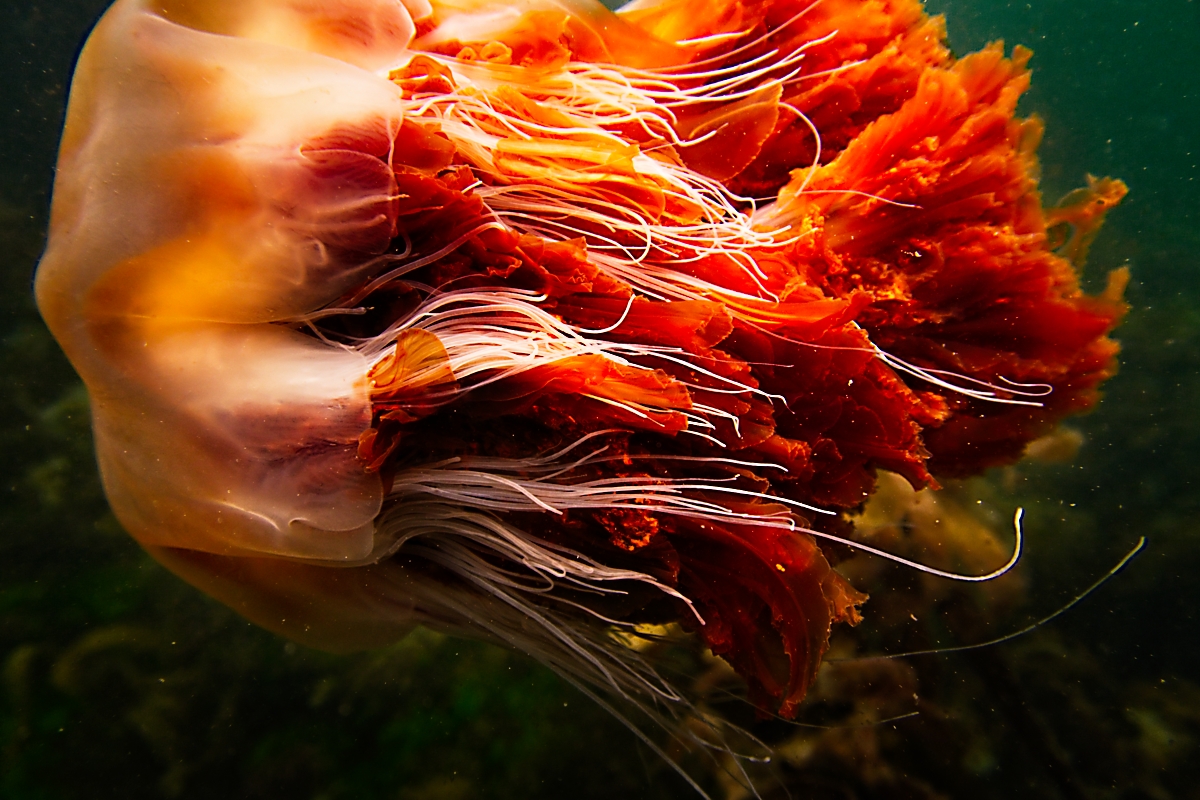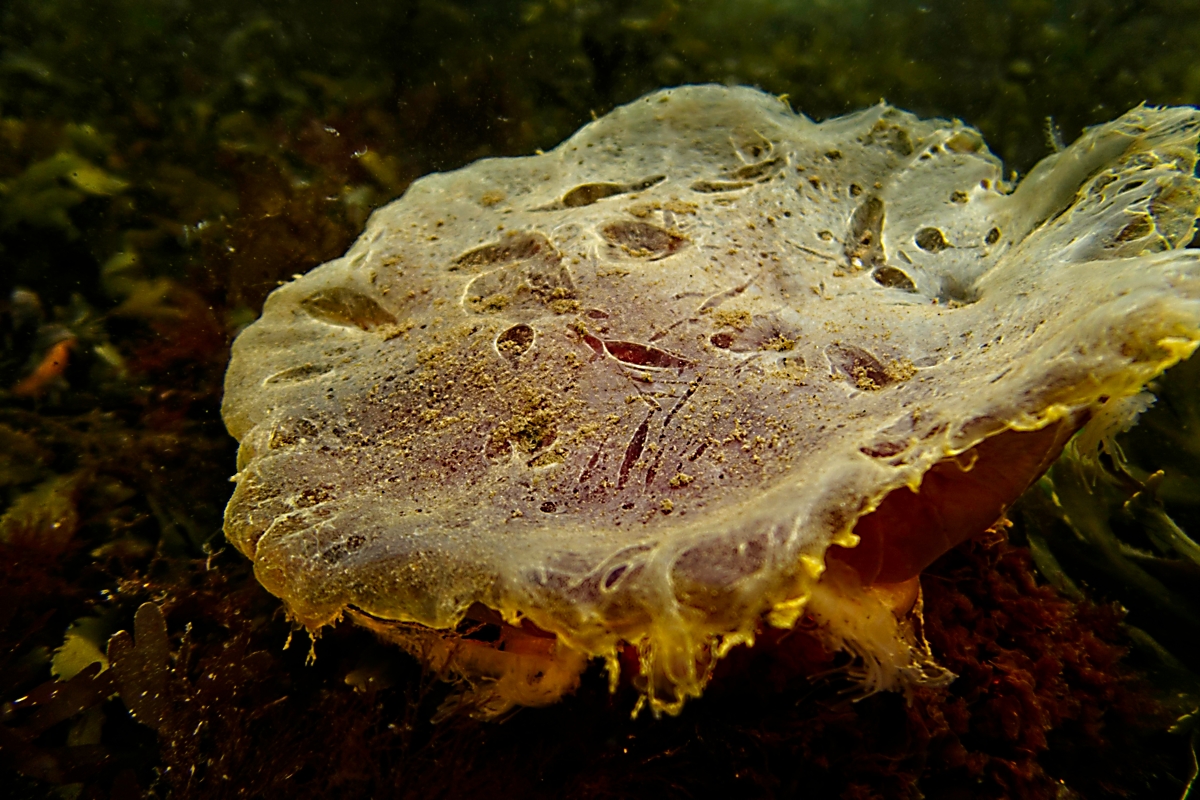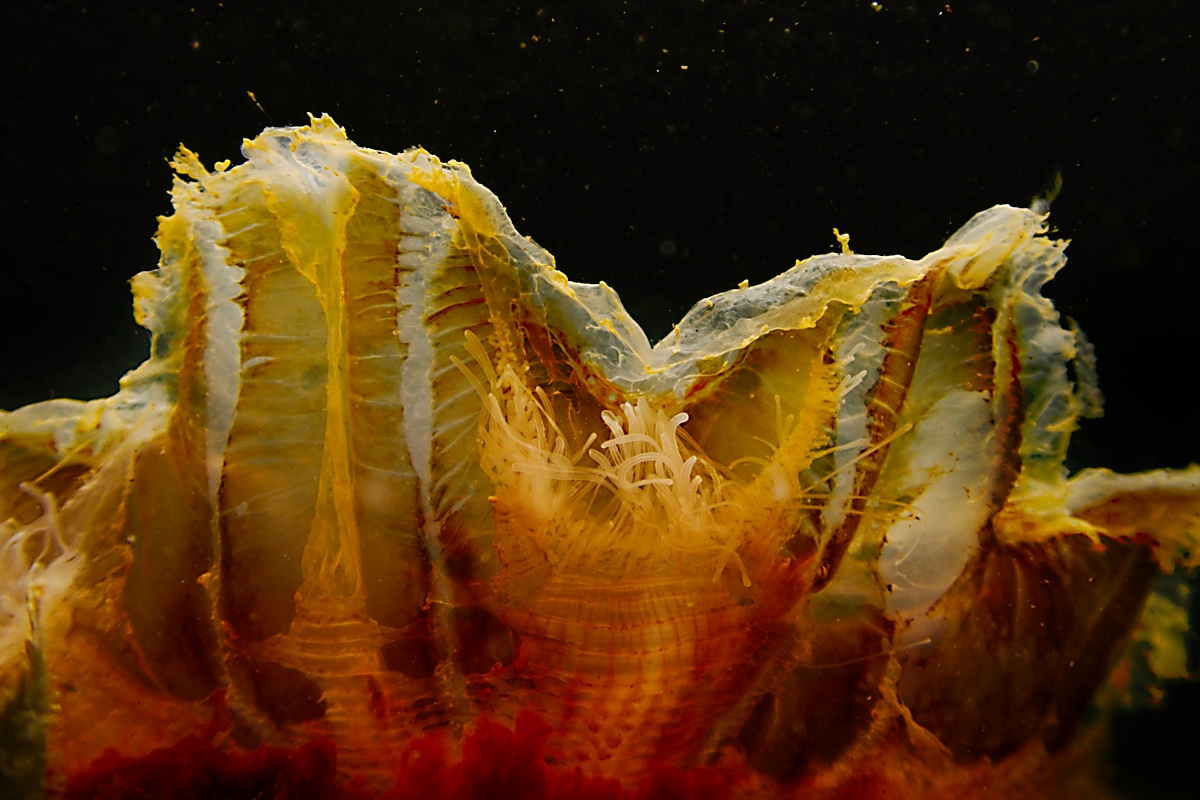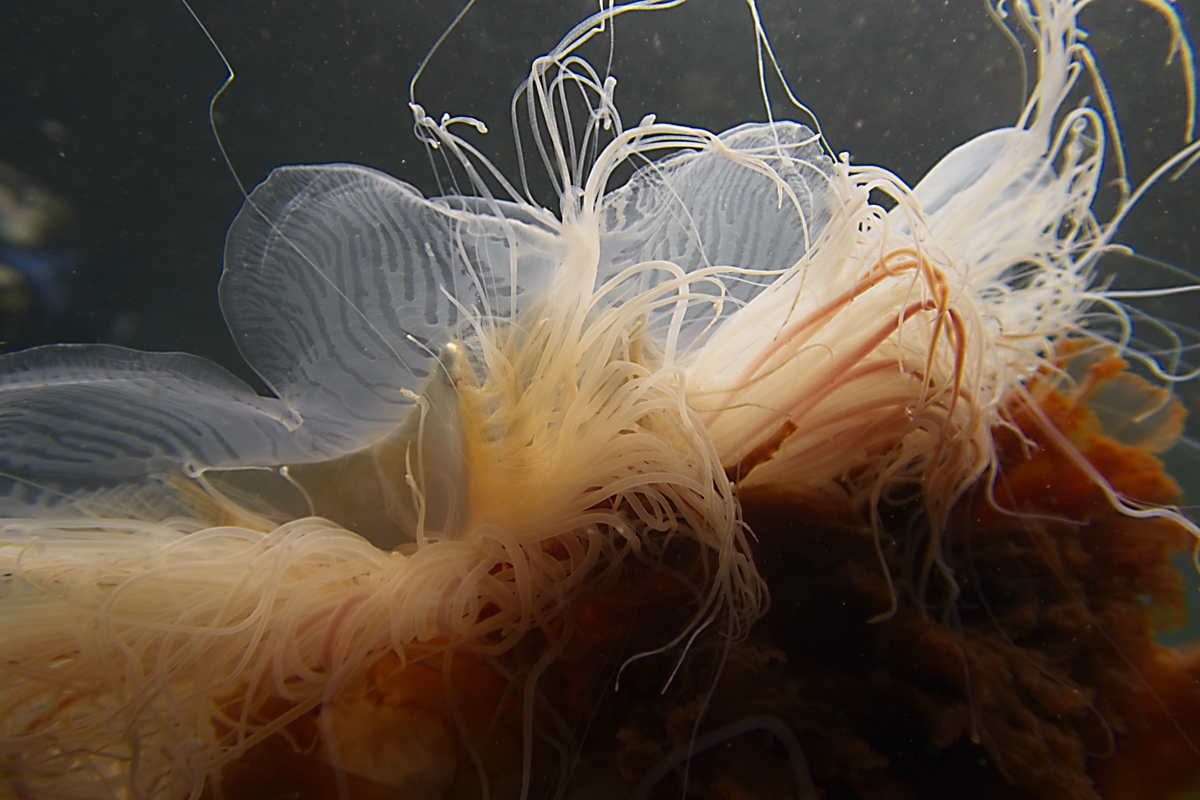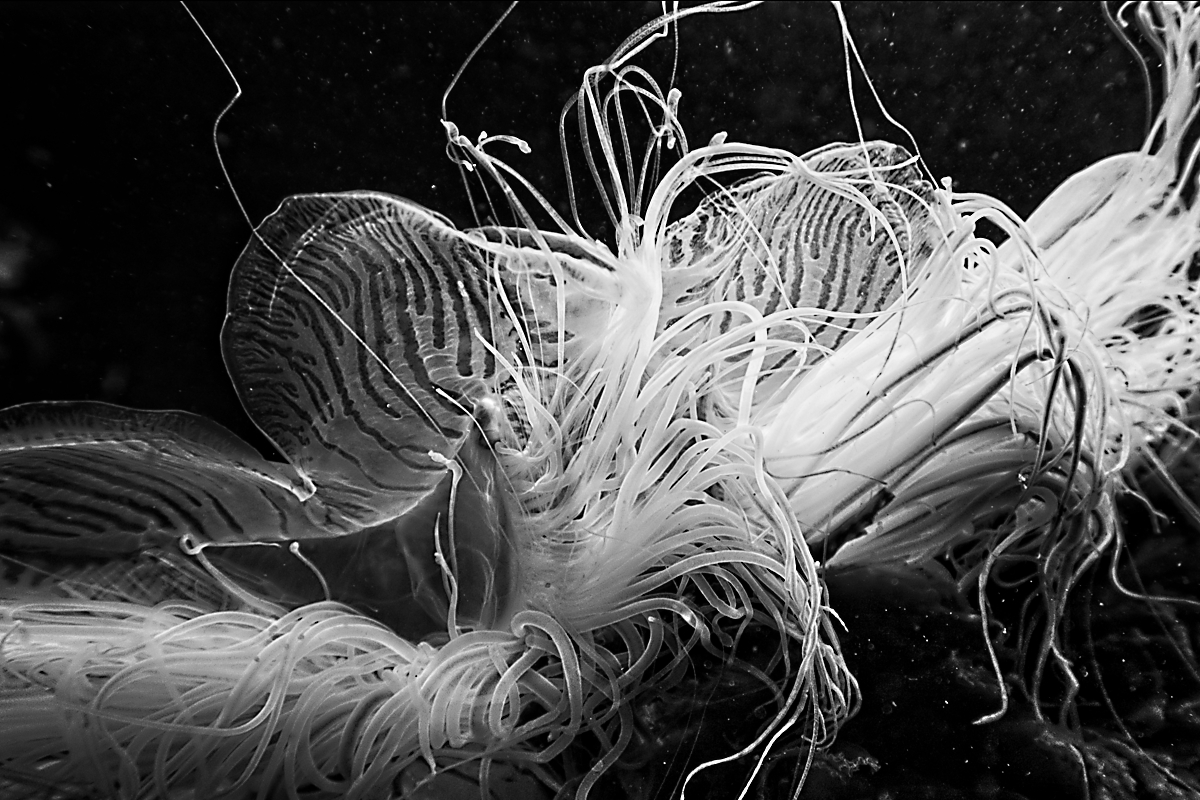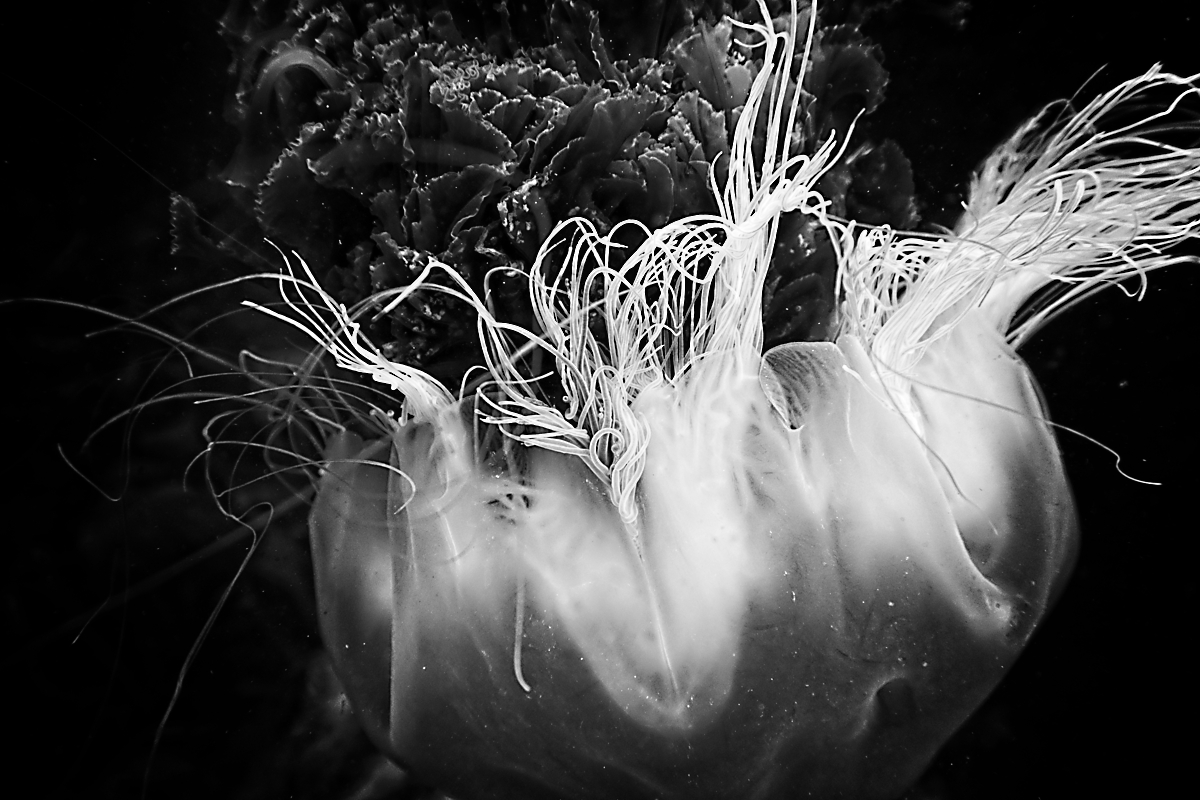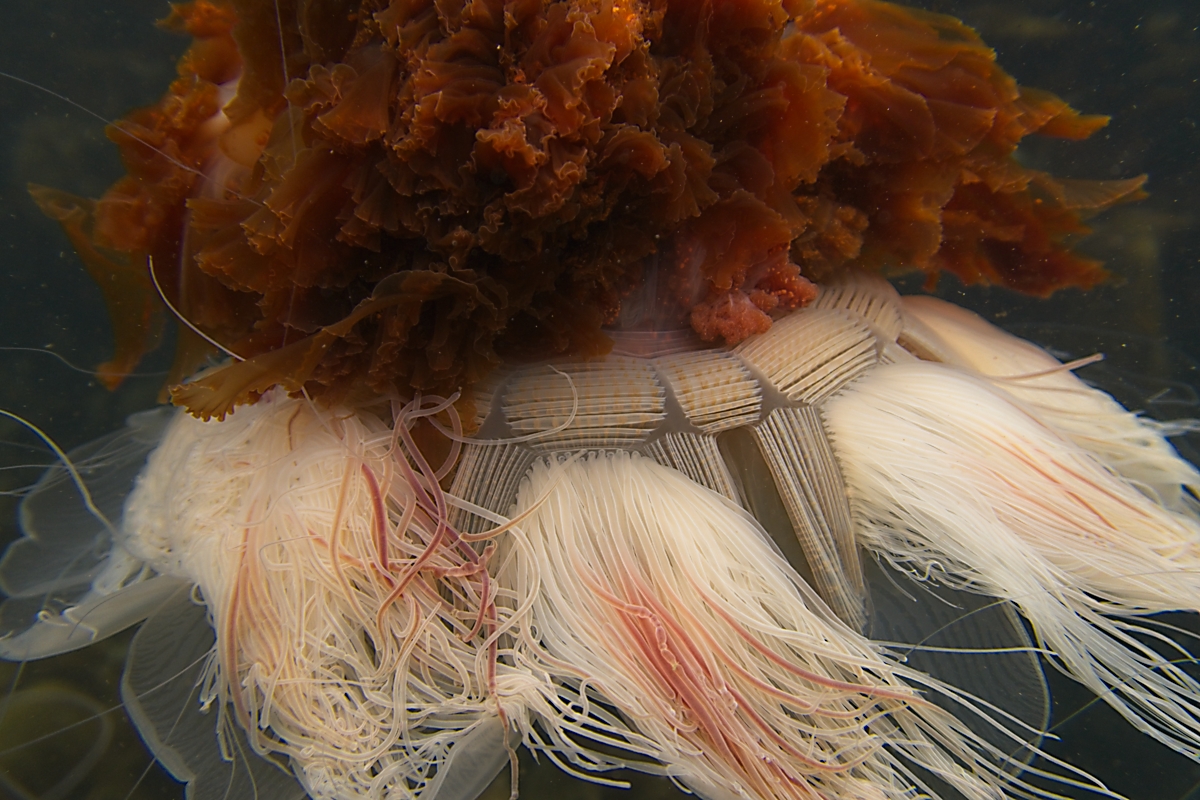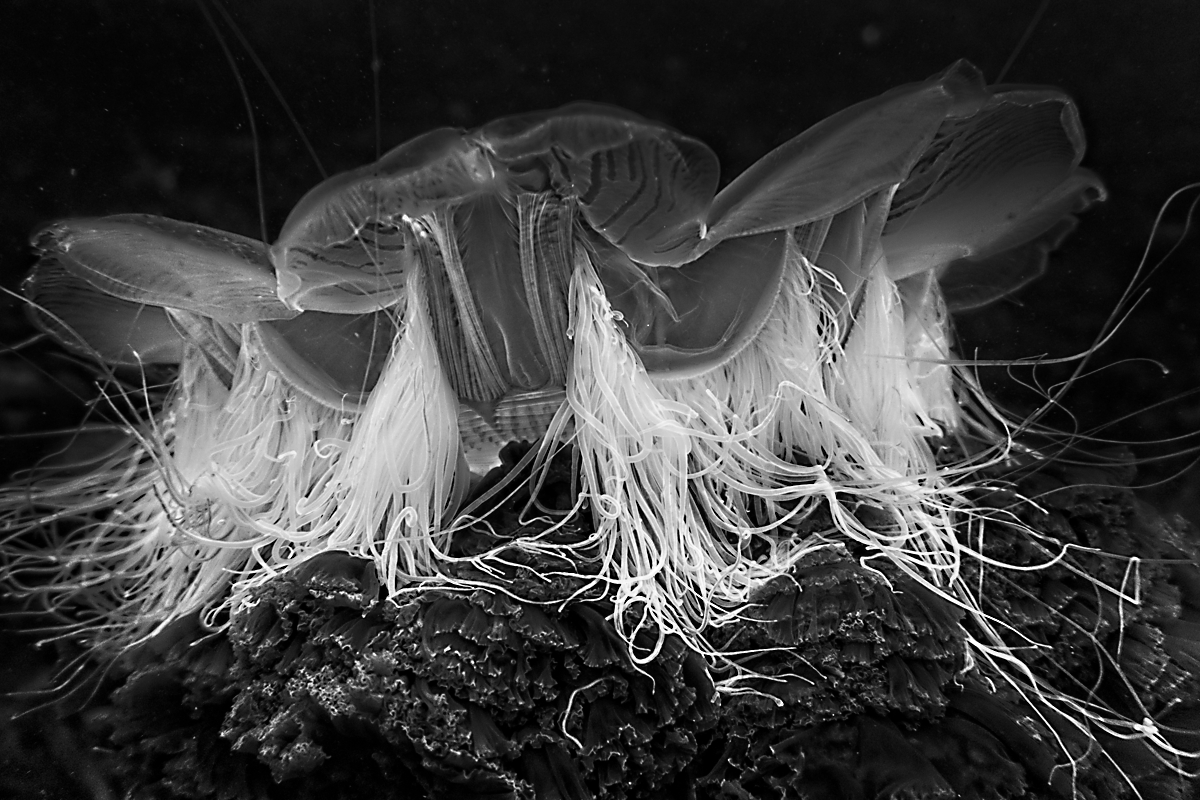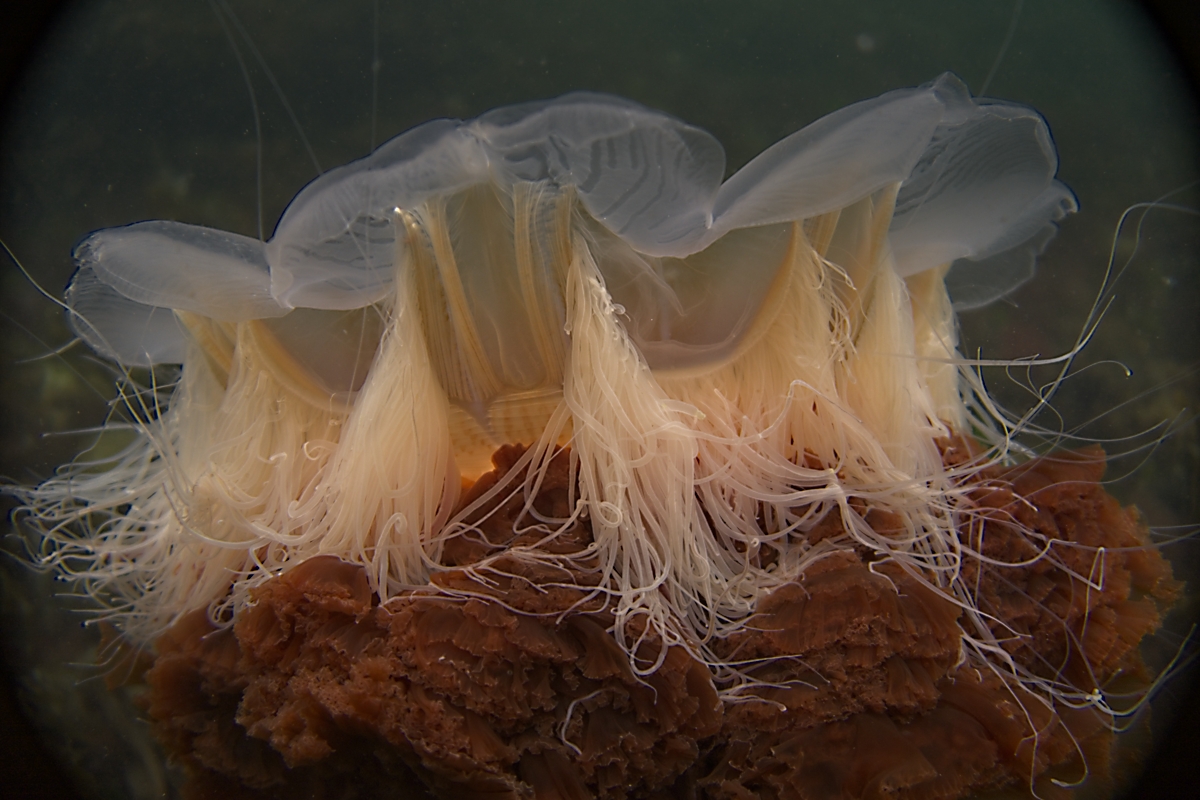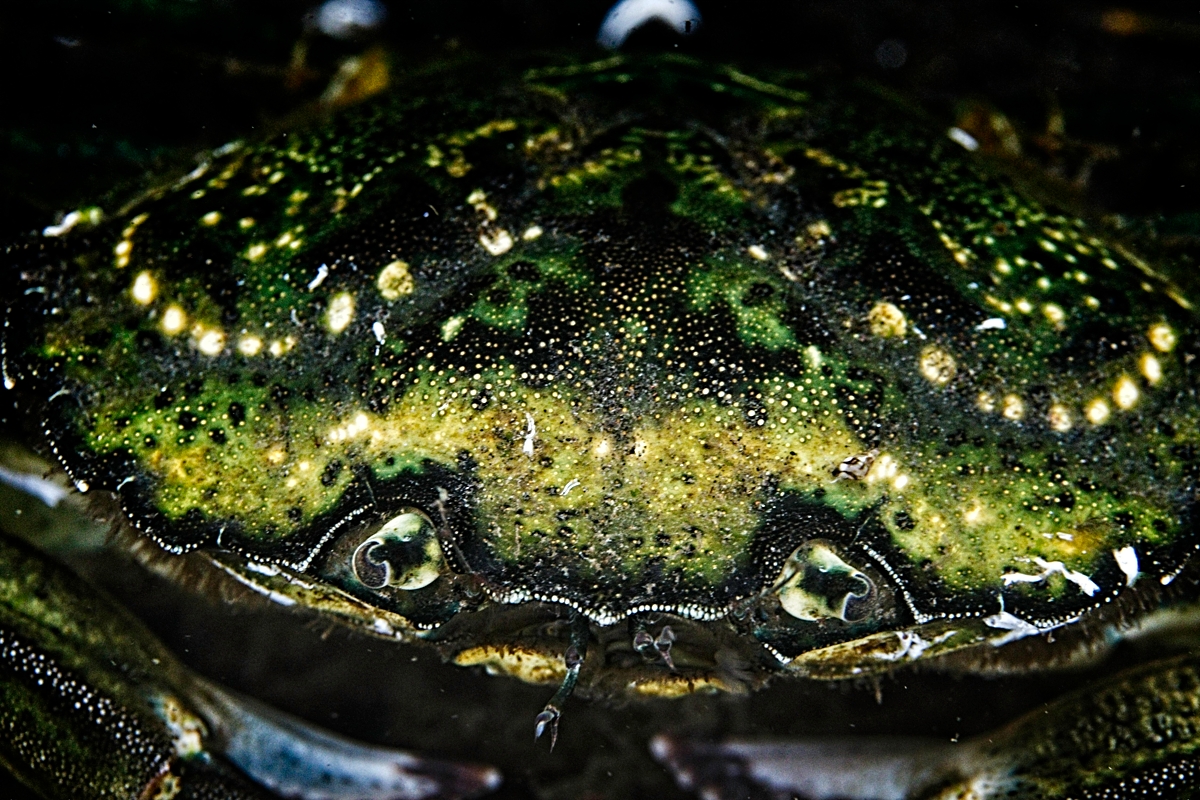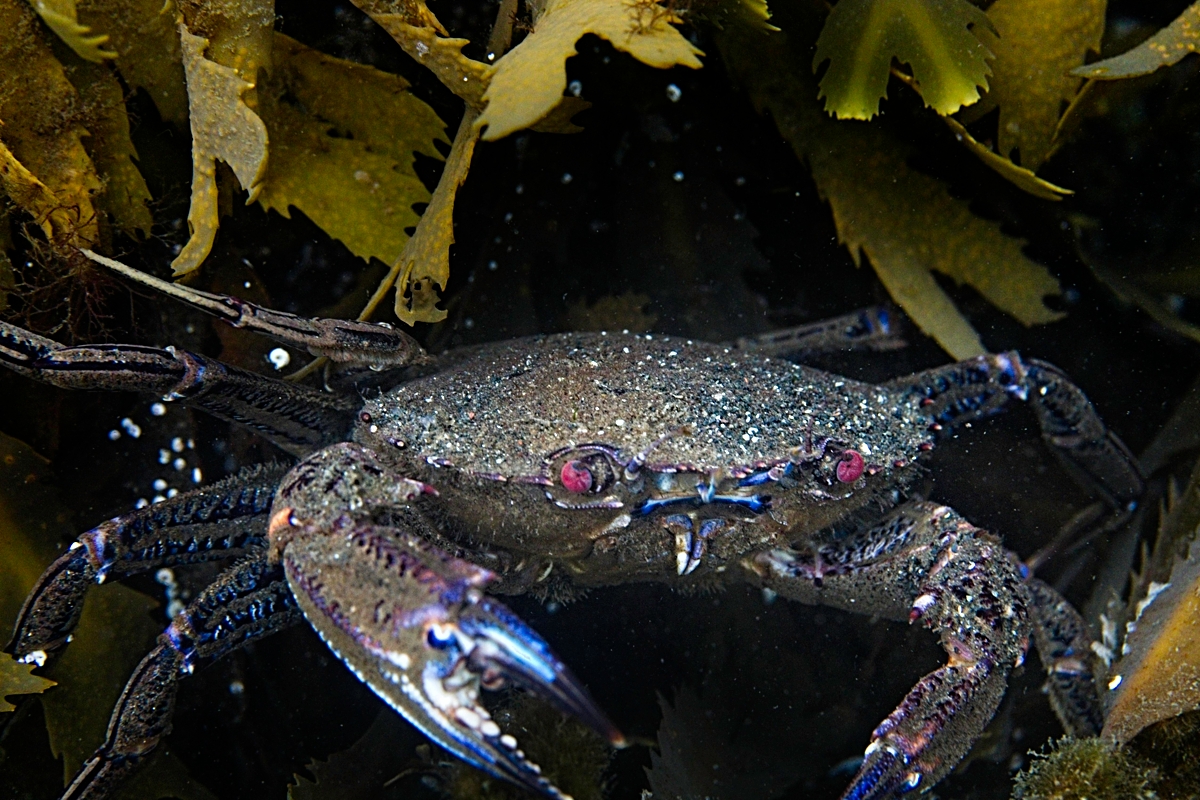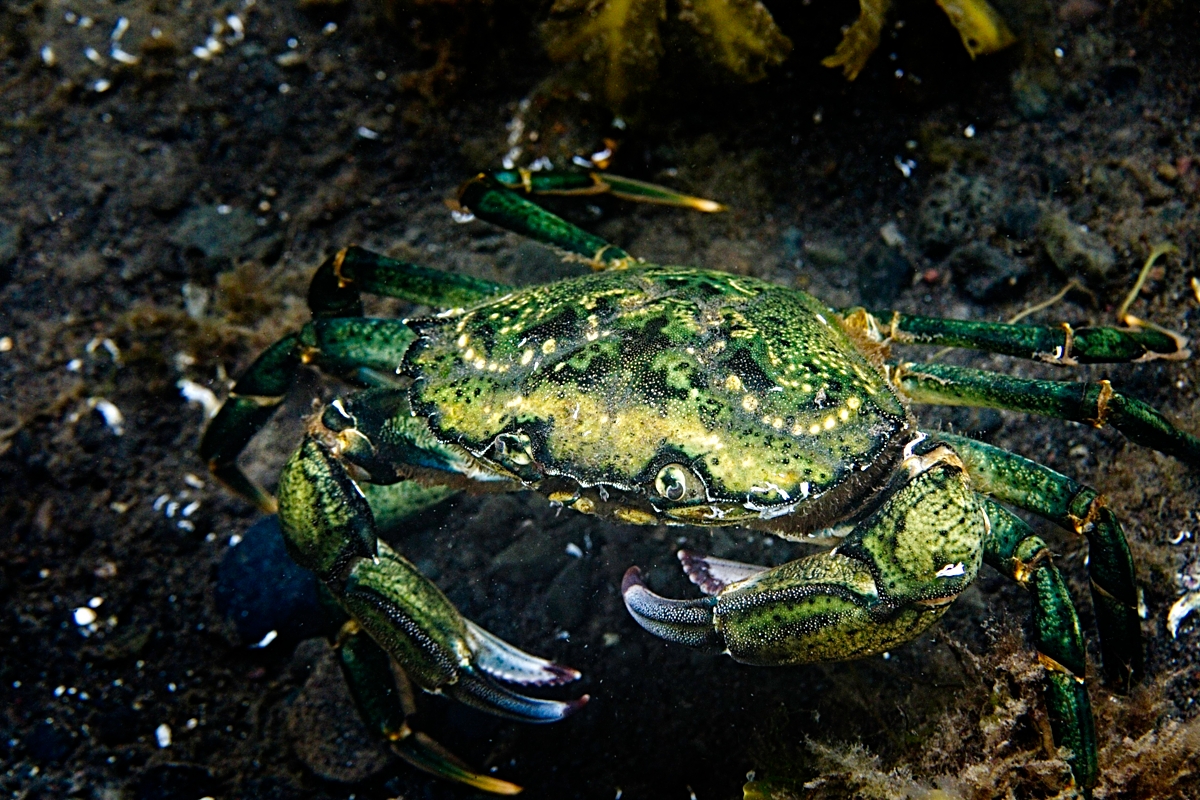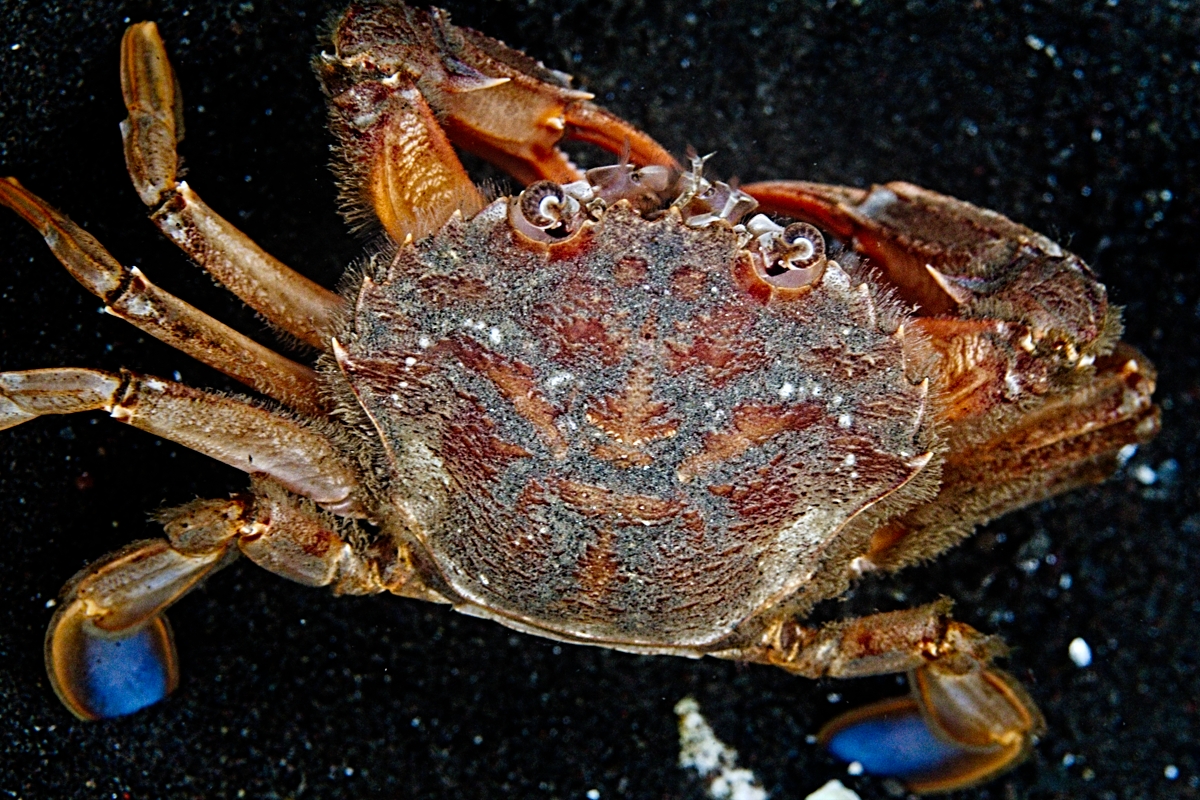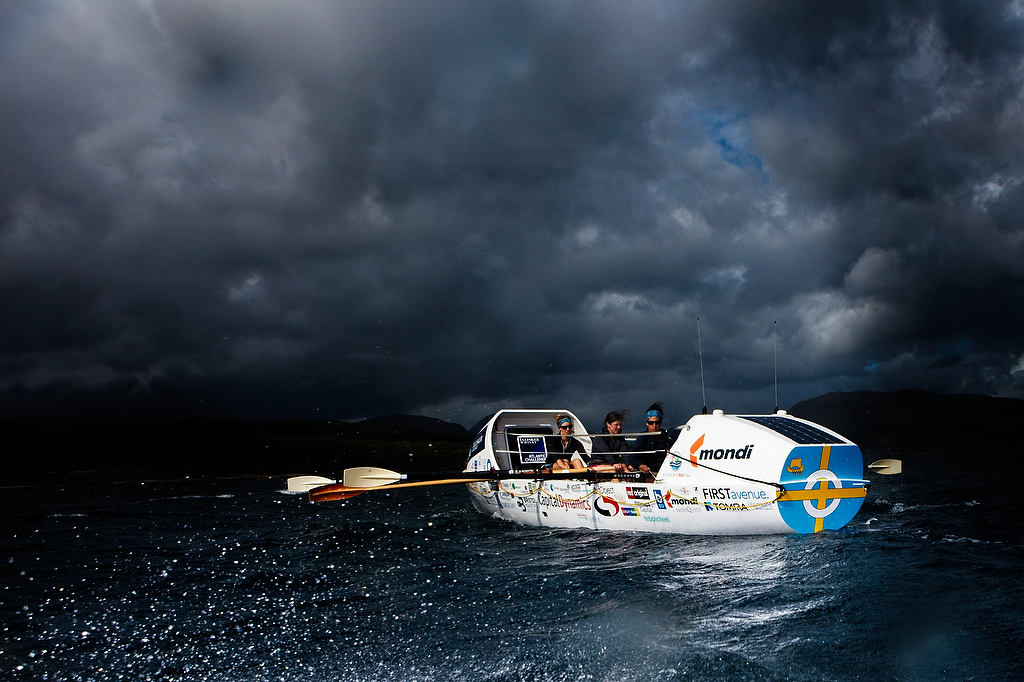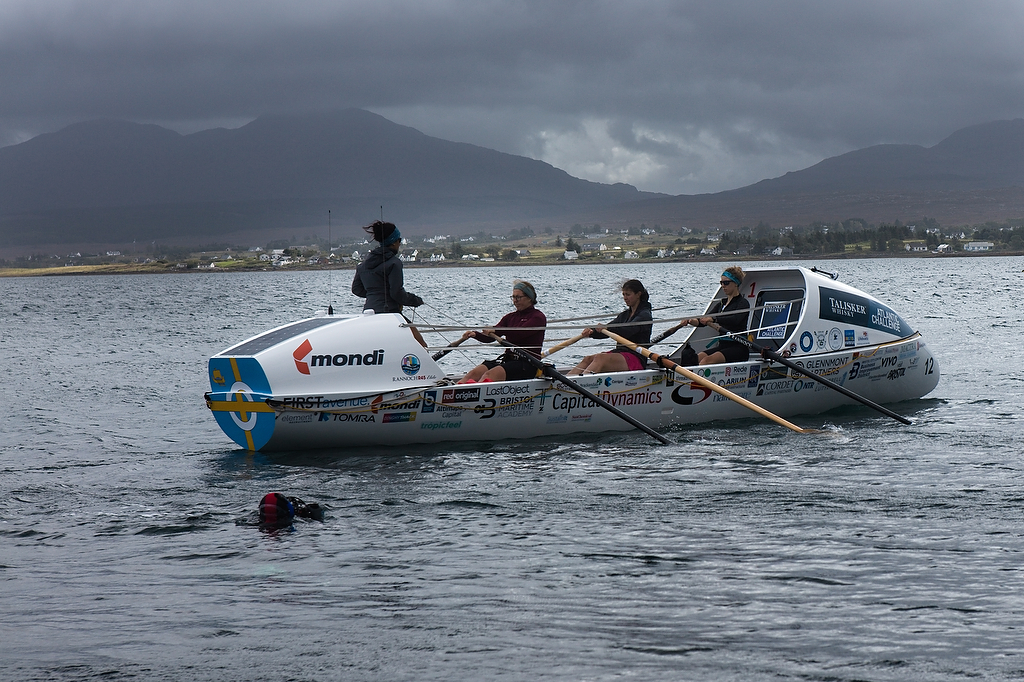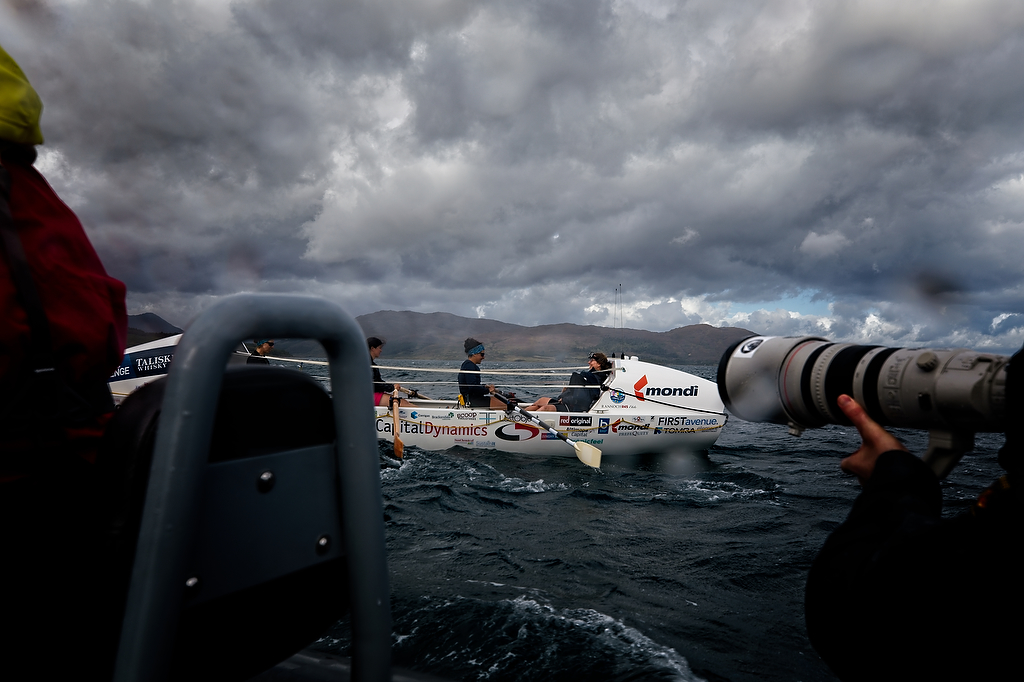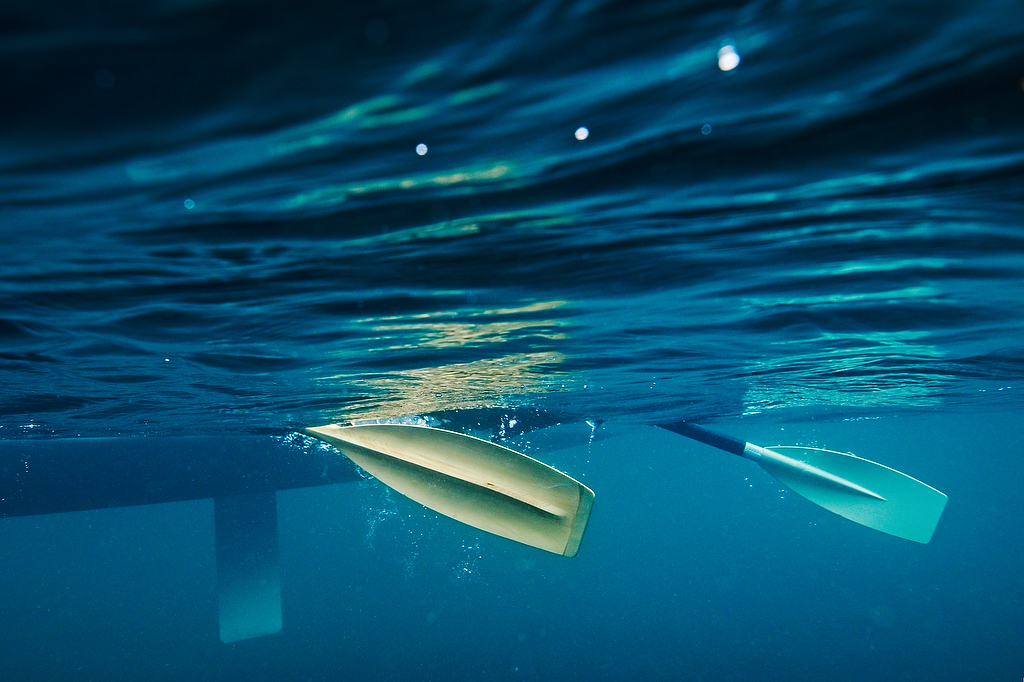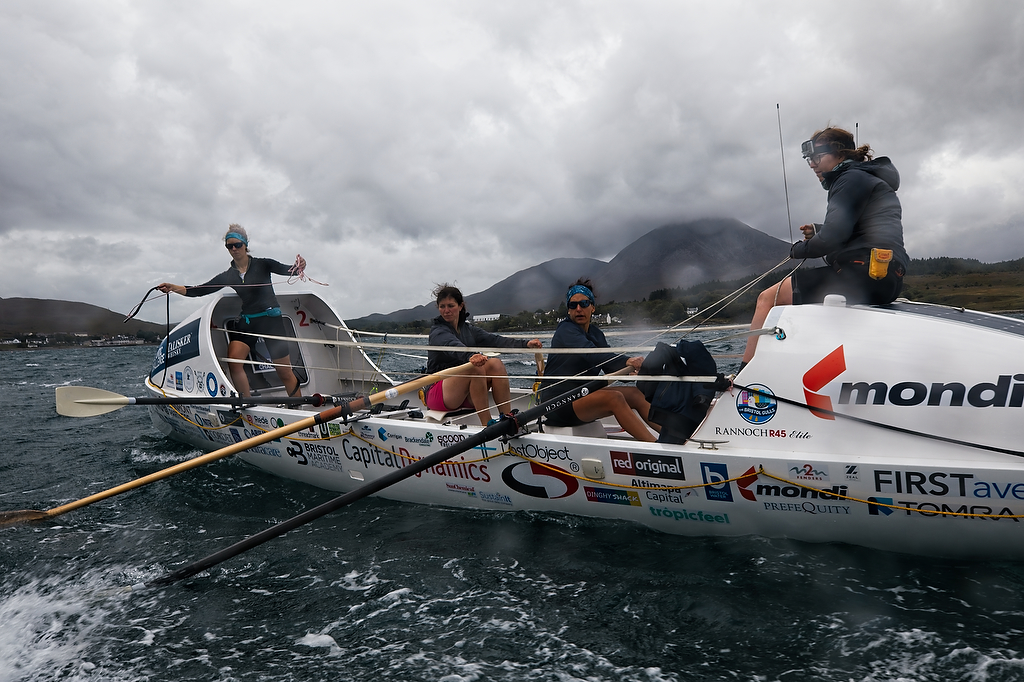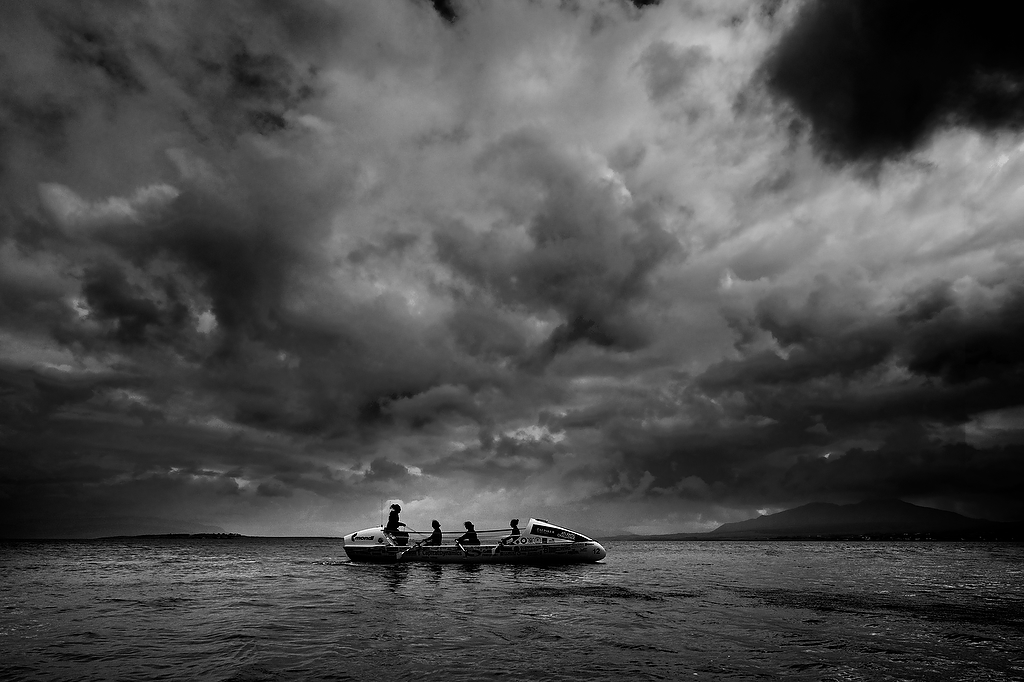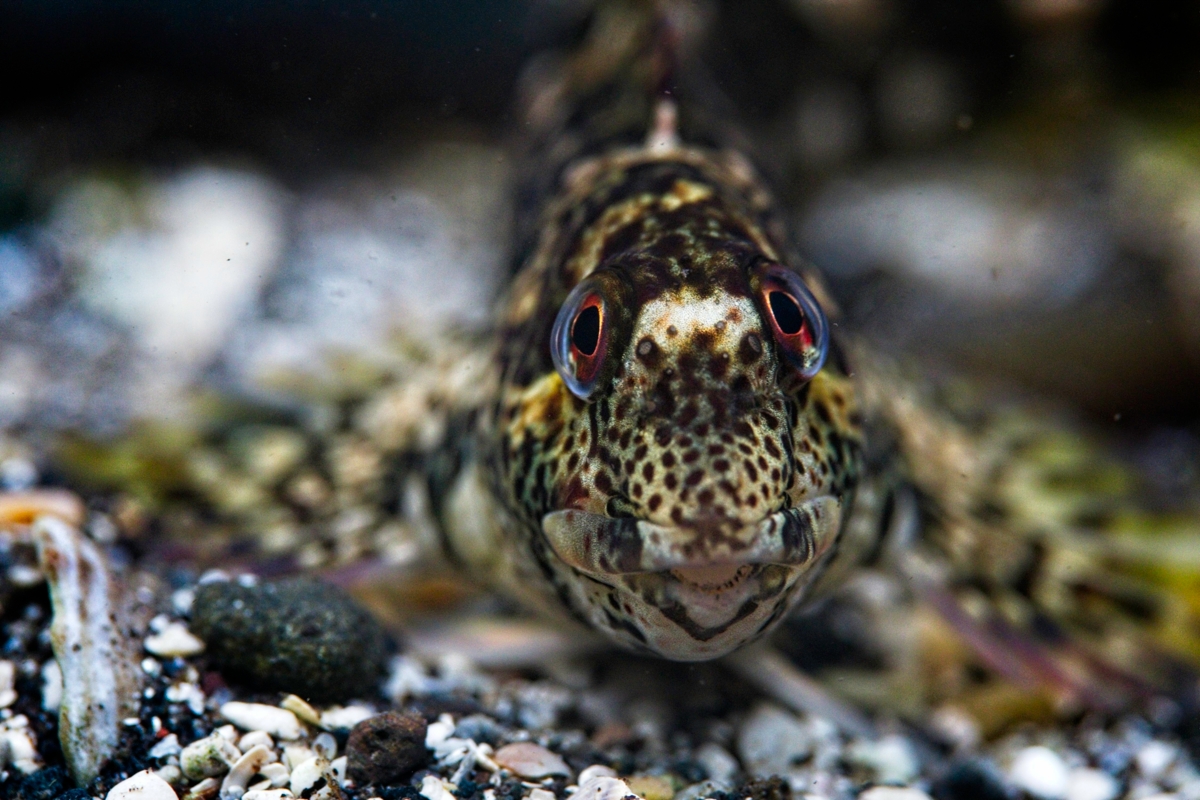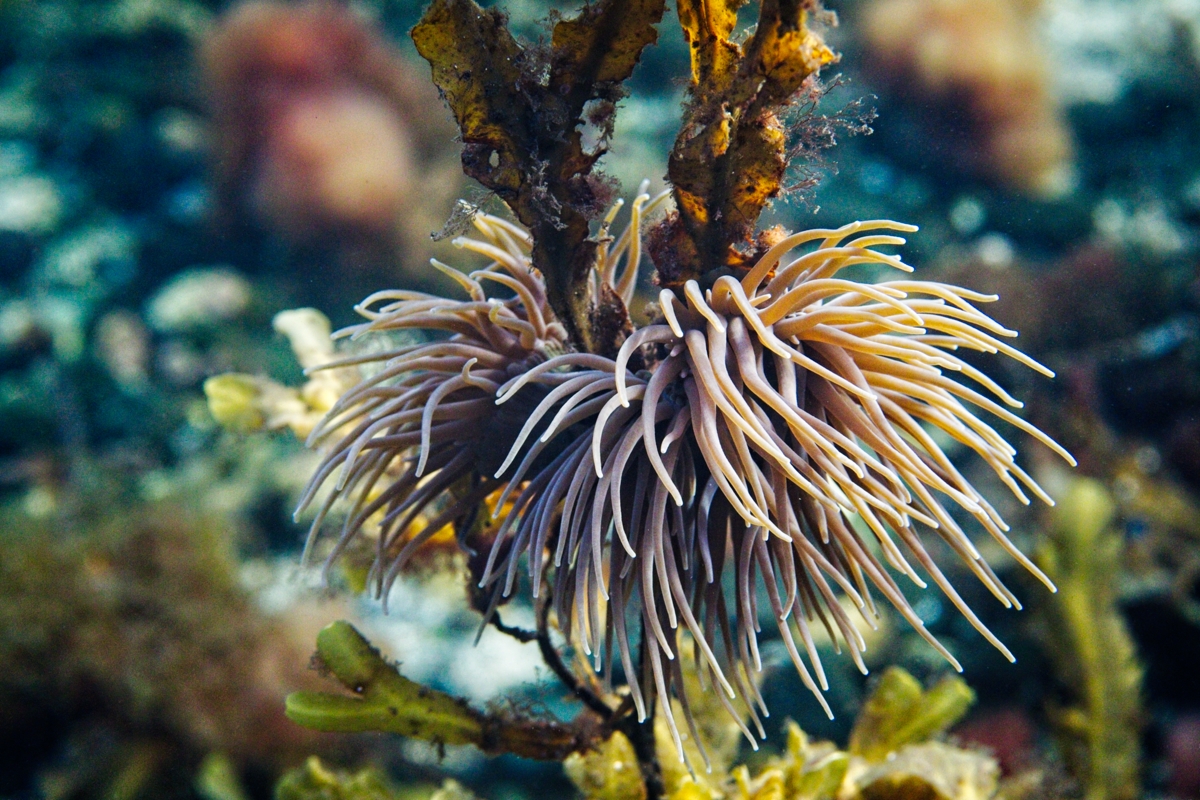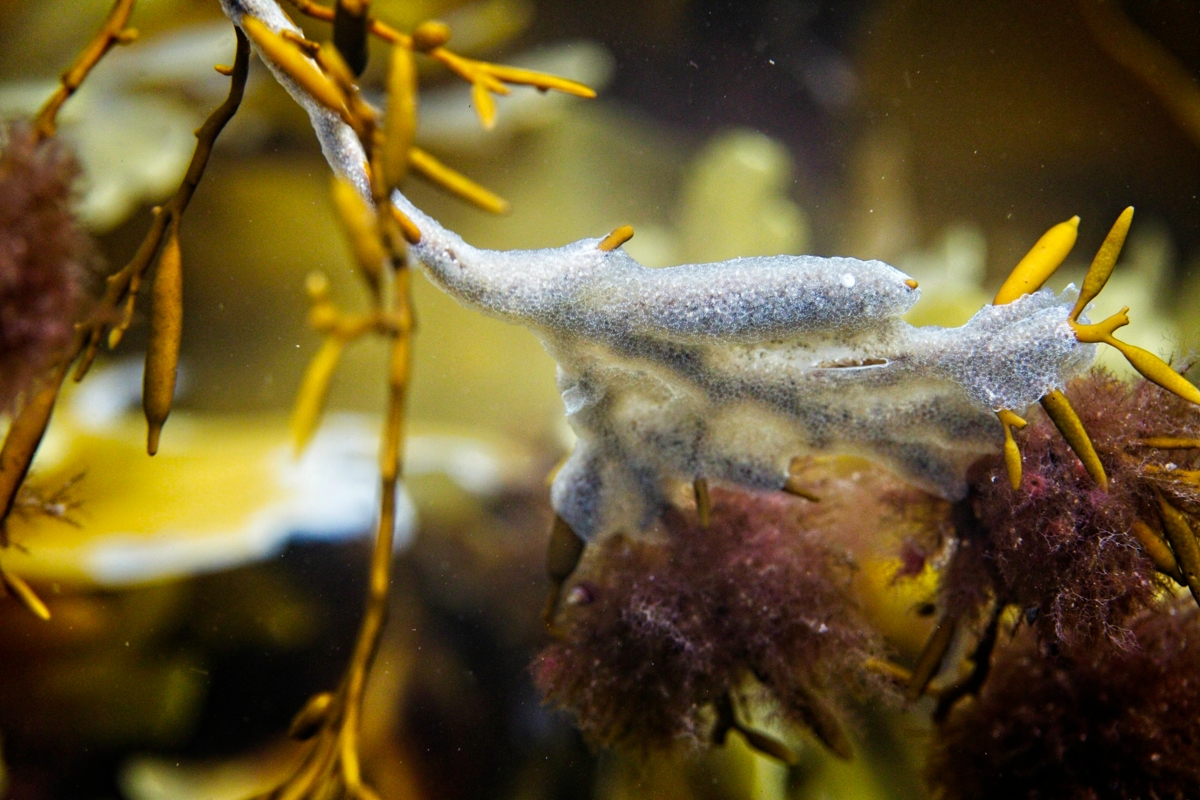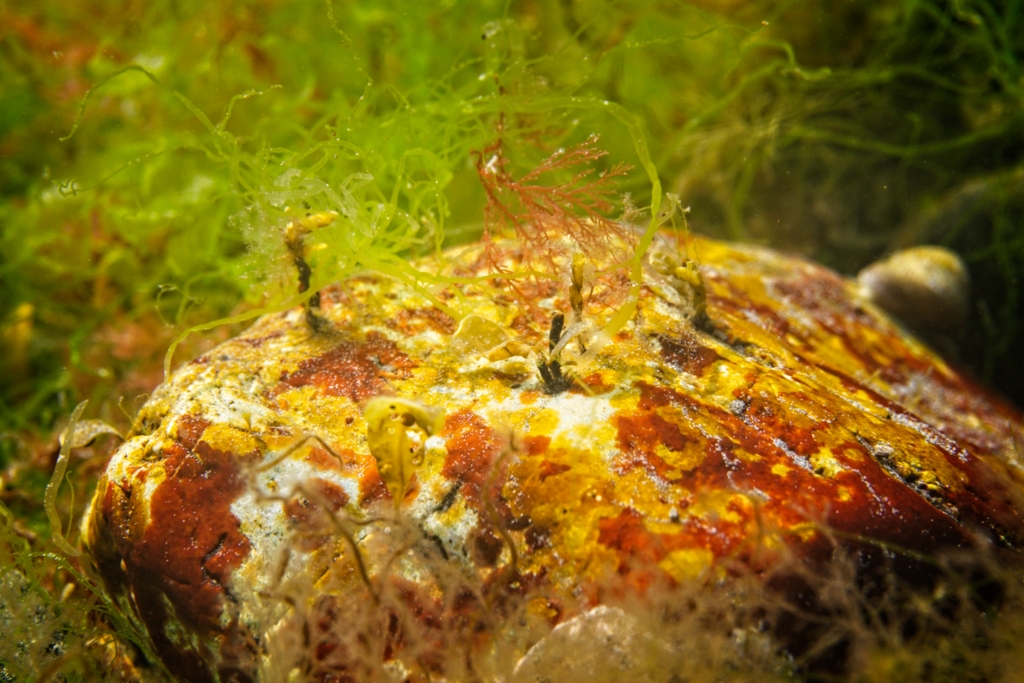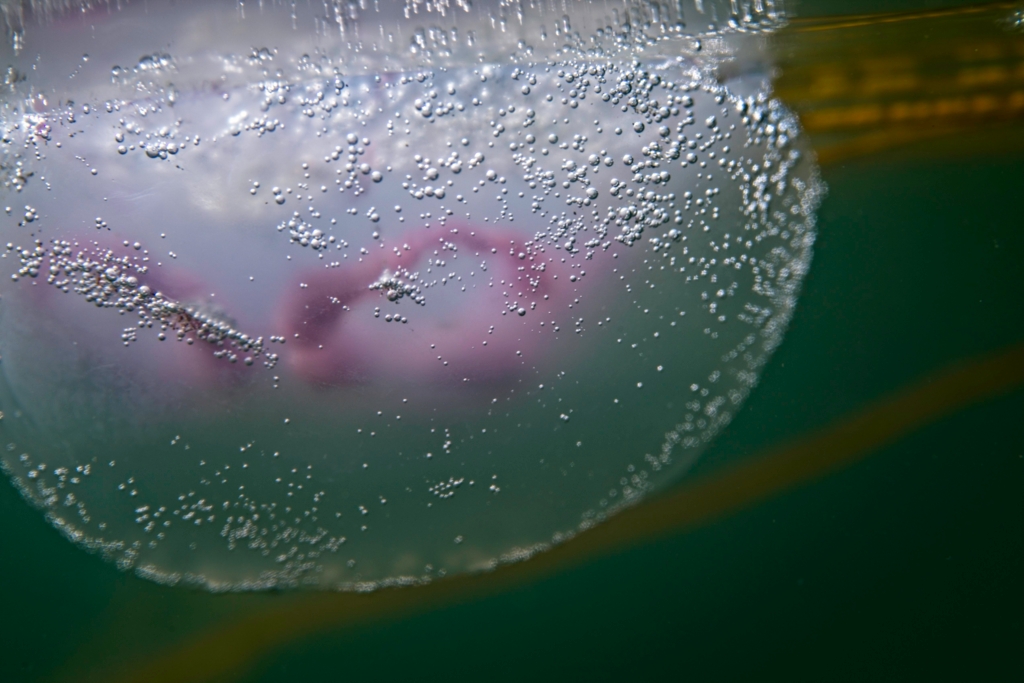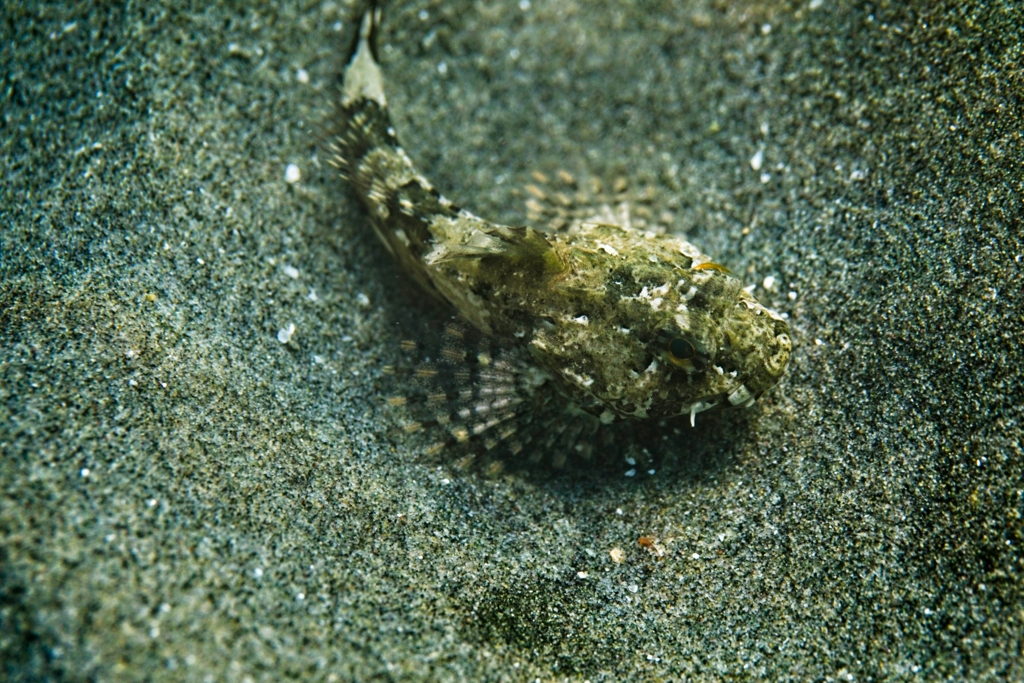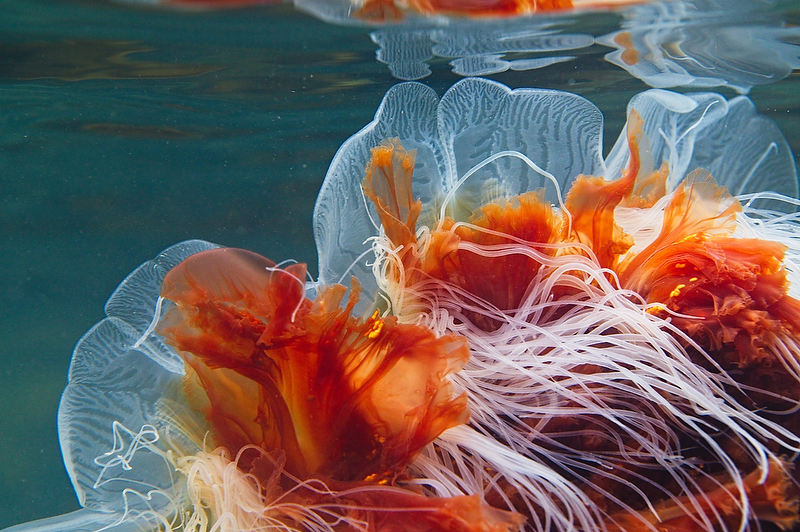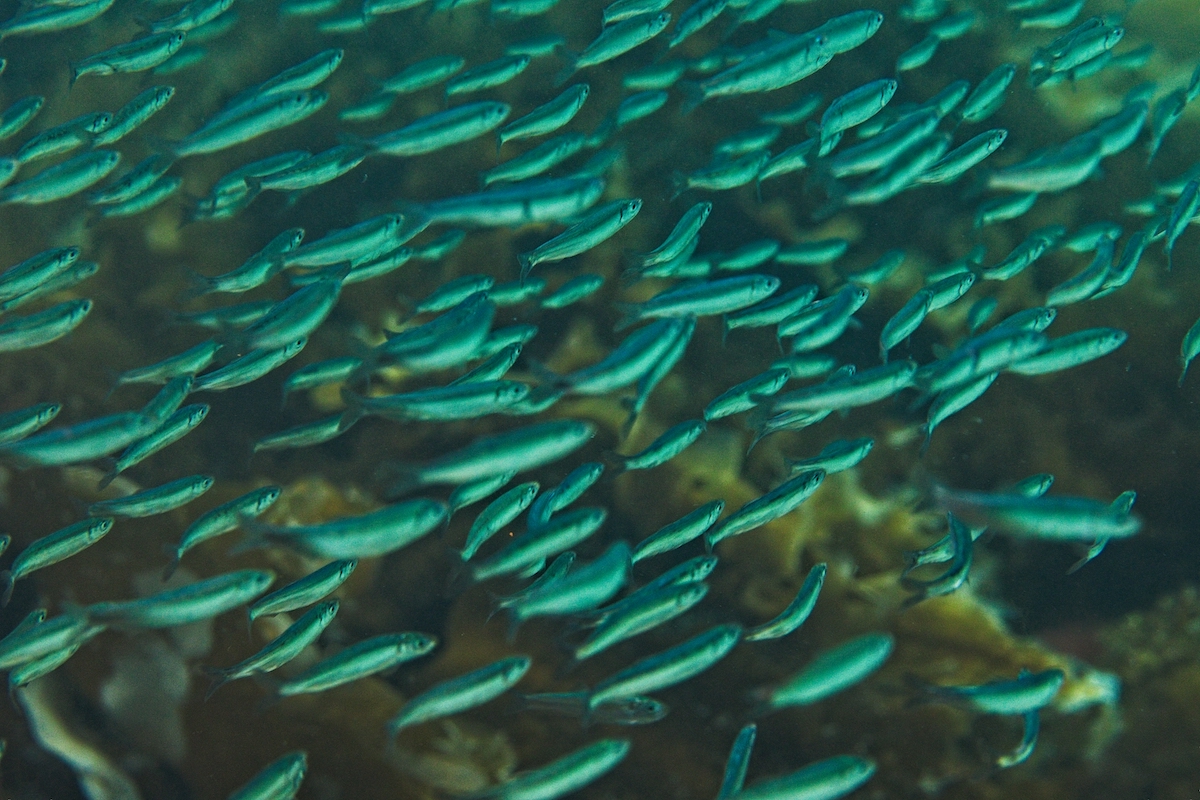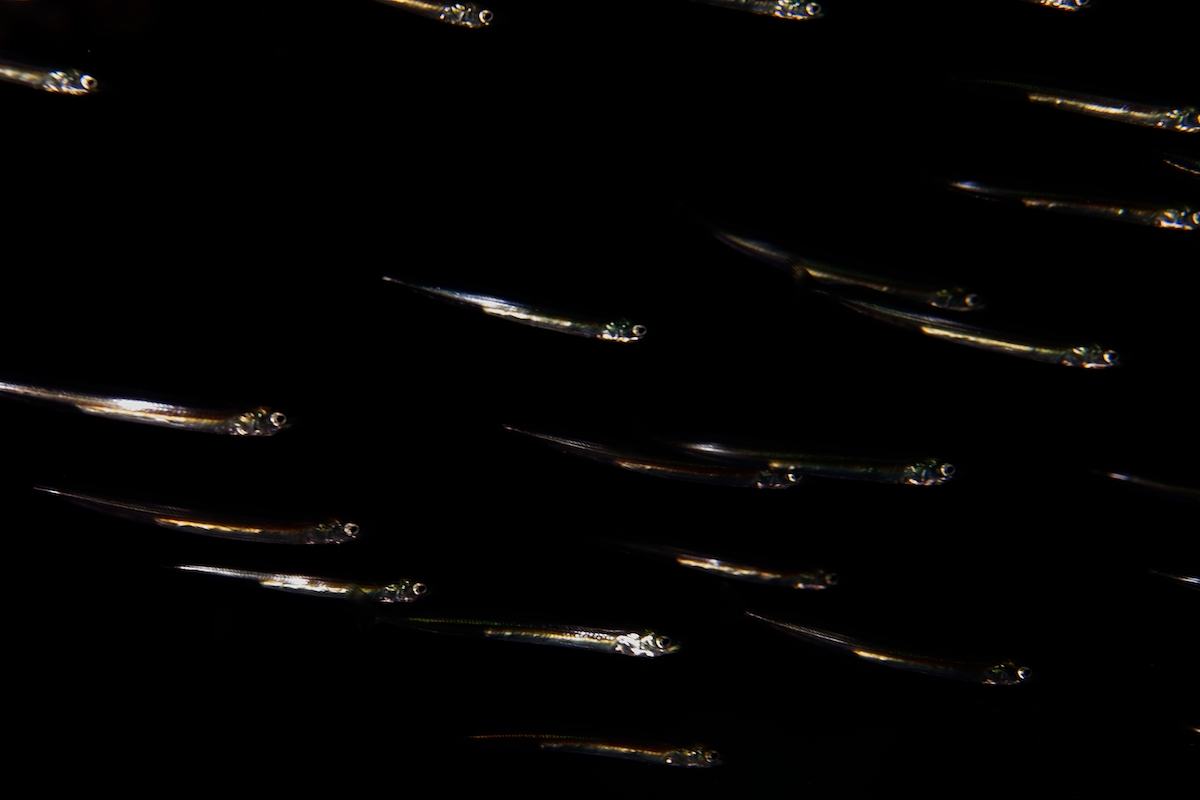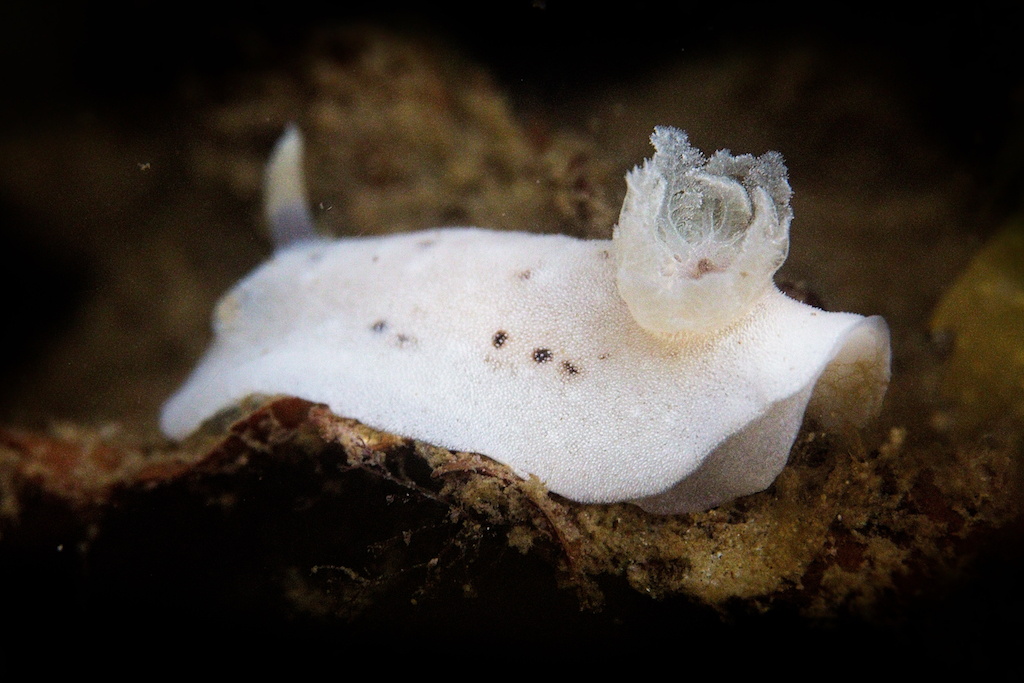The vast majority of the images we have created at Below the Skye Line have been in colour. The reason, in many ways, is obvious, as it is often the colour in the underwater environment that captures and captivates. Whether this is the young mussels from earlier this year, a brightly coloured wrasse or vibrant seaweed brought to life by sunshine as it streams through the loch waters. One of the most vibrant creatures we have created images of has to be the Lion's Mane jellyfish. However does its colour mask some of the beauty of its detail? We recently ran a series of 4 images in monochrome which was chosen to bring out some of the detail and below we have reproduced the same images along with their colour counterpart. Life, after all, is all about choice.
When we create images we make our own choices either through camera settings or what we choose to do in post production. With the Below the Skye Line project we rarely use filters, relying instead on the powerful adjustments of light levels, contrast and white balance. At the end though the aim is always to highlight the environment we are capturing. Whether that is its detail or interaction of colour viewed through a wider canvas. Having these choices brings its own responsibility that we do not stray from the inherrent beauty of the underwater world. We are fortunate that around the ISle of Skye that beauty is both colourful and detailled.
